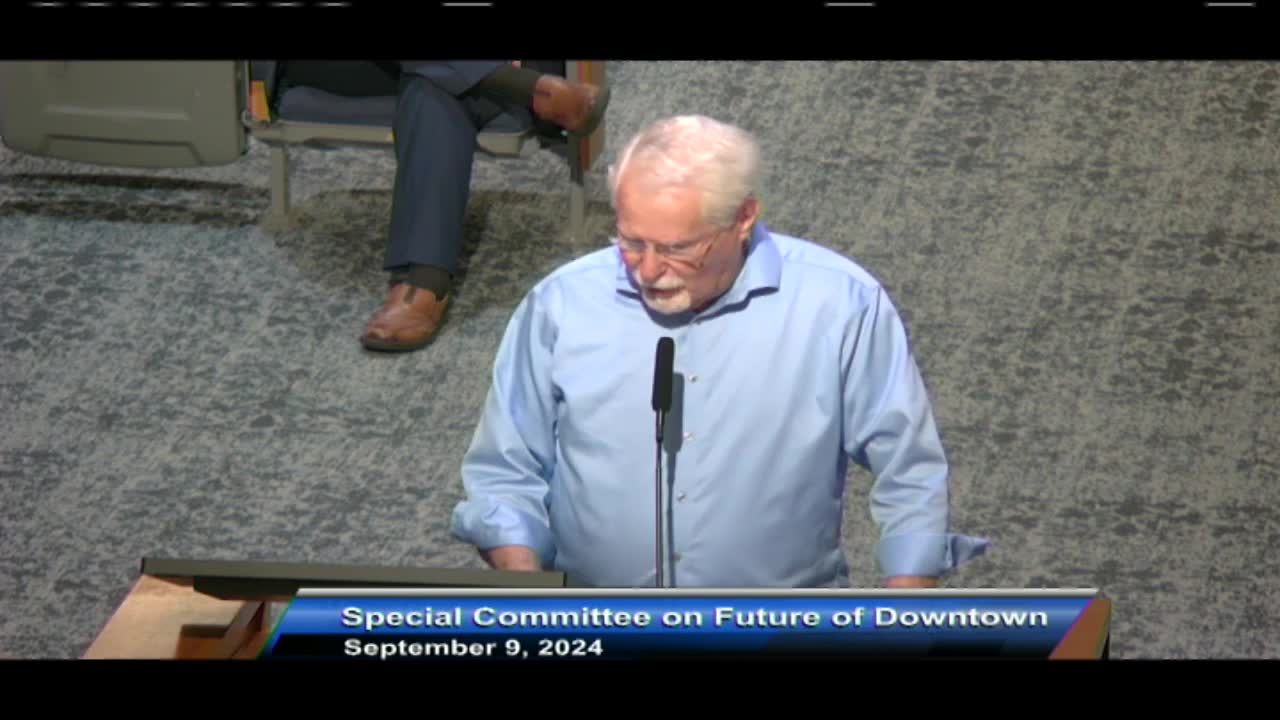Jacksonville's architectural legacy at risk of vanishing
September 09, 2024 | Jacksonville, Duval County, Florida
This article was created by AI summarizing key points discussed. AI makes mistakes, so for full details and context, please refer to the video of the full meeting. Please report any errors so we can fix them. Report an error »

On May 3, 1901, a devastating fire swept through downtown Jacksonville, destroying 90% of the area and leaving 2,368 buildings in ruins. This catastrophic event marked the second-largest city fire in U.S. history, capturing national attention and prompting a wave of rebuilding efforts.
Among those inspired to help rebuild was 28-year-old architect Henry John Klutho, who, upon reading about the disaster in the New York Times, relocated to Jacksonville. Trained in classical architecture, Klutho soon embraced a new American architectural style influenced by contemporaries like Frank Lloyd Wright and Louis Sullivan, the latter being a pivotal figure in the development of the American skyscraper.
Klutho's innovative designs began to reshape Jacksonville's skyline, starting with the Bisbee Building, Florida's first skyscraper, which was completed in 1909. This 10-story structure featured large plate glass windows and was so popular that its owner requested it be doubled in size before completion. Klutho's subsequent projects included the Saint James Building, commissioned by department store owners Jacob and Morris Cohen, which became the ninth-largest department store in America and is now home to Jacksonville's city hall.
The Florida Life Building, another of Klutho's significant works, embodied the ideals of Sullivan's architectural philosophy, showcasing a proud and soaring design. However, the building's original terracotta crown was removed in 1993, prompting calls for its restoration.
Today, the Laura Street Trio, which includes the Marble Bank and Klutho's two skyscrapers, stands as a unique architectural ensemble. This grouping is rare in American architecture, as it allows for a complete view of all three buildings from a single vantage point. Unfortunately, these structures have remained vacant for decades, and their preservation is deemed Jacksonville's most urgent architectural project.
Klutho's contributions to Jacksonville's architectural landscape have largely been overlooked since his death in 1964, and many of his prairie-style buildings have been lost. Advocates for preservation emphasize the importance of saving the Laura Street Trio, likening it to a priceless work of art that must be protected for future generations. The call to action is clear: Jacksonville must act decisively to restore and preserve its architectural heritage before it is too late.
Among those inspired to help rebuild was 28-year-old architect Henry John Klutho, who, upon reading about the disaster in the New York Times, relocated to Jacksonville. Trained in classical architecture, Klutho soon embraced a new American architectural style influenced by contemporaries like Frank Lloyd Wright and Louis Sullivan, the latter being a pivotal figure in the development of the American skyscraper.
Klutho's innovative designs began to reshape Jacksonville's skyline, starting with the Bisbee Building, Florida's first skyscraper, which was completed in 1909. This 10-story structure featured large plate glass windows and was so popular that its owner requested it be doubled in size before completion. Klutho's subsequent projects included the Saint James Building, commissioned by department store owners Jacob and Morris Cohen, which became the ninth-largest department store in America and is now home to Jacksonville's city hall.
The Florida Life Building, another of Klutho's significant works, embodied the ideals of Sullivan's architectural philosophy, showcasing a proud and soaring design. However, the building's original terracotta crown was removed in 1993, prompting calls for its restoration.
Today, the Laura Street Trio, which includes the Marble Bank and Klutho's two skyscrapers, stands as a unique architectural ensemble. This grouping is rare in American architecture, as it allows for a complete view of all three buildings from a single vantage point. Unfortunately, these structures have remained vacant for decades, and their preservation is deemed Jacksonville's most urgent architectural project.
Klutho's contributions to Jacksonville's architectural landscape have largely been overlooked since his death in 1964, and many of his prairie-style buildings have been lost. Advocates for preservation emphasize the importance of saving the Laura Street Trio, likening it to a priceless work of art that must be protected for future generations. The call to action is clear: Jacksonville must act decisively to restore and preserve its architectural heritage before it is too late.
View full meeting
This article is based on a recent meeting—watch the full video and explore the complete transcript for deeper insights into the discussion.
View full meeting